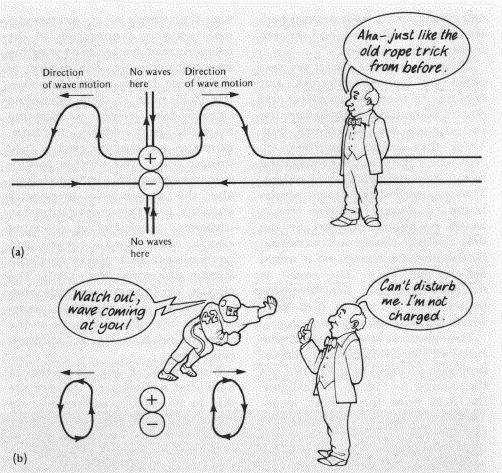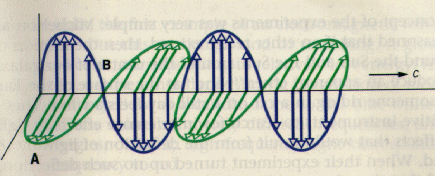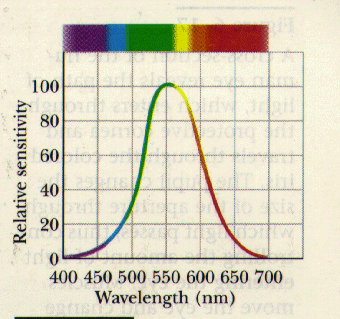
Light: an electromagnetic wave

|
 Electromagnetic Waves Electromagnetic WavesIt took a long time for scientiests to accept the notion that no material was needed for some types of waves. In particular, light waves are disturbances of the electromagnetic field, a nonmaterial physical entity whose quiescent state is the vacuum itself. But when one wants to visualize this field one often thinks of something similar to the stretched rope along which rope wave propagate.
It is known that there are two kinds of electric charge, positive and
negative, and that opposite charges attract, likes repel. A negative charge
attracts a positive one, that is, the positive charge feels a force even
though the two are not touching. So there is something pulling on the positive
charge, even if there is nothing material immediately near it.
This is called the electric field
(of the negative charge in this case).

(a) A negative charge with its field lines. The field lines
show the direction of force a positive charge would feel if it were
at a point on one of the lines. If there happens to be no such positive
charge, the field lines are still there. If you wiggle a a charge up and down, you move the ends of all the field lines attached to it up and down. However, the hump that propagates along the horizontal lines will be largest, whereas a vertical field line will only slide along the direction of its length and, therefore, suffer no propagating displacement. Hence, no wave is propagated in the direction along which the charge wiggles, and the strongest waves are propagated in directions that are perpendicular to the direction of the wiggle.

(a) A positive charge at the center has just moved up and down.
The hump in the horizontal field lines is largest. The vertical
field lines are not affeacted by this charge motion.
 Properties of Light Properties of LightLight waves are oscillations of the electric field
Electromagnetic waves are self-propagating waves made up of electric and magnetic fields fluctuating together. Energy is transferred not through matter, but through electric and magnetic fields. A typical electromagnetic wave
 consists of electric and magnetic fields arranged at right angles to each other and perpendicular to the direction the wave.gif is moving. At the point A the electric and magnetic fields associated with the wave are at maximum strength, but these fields are changing rapidly, so both decrease in strength. At point B the fields are at minimum strength and begin to increase. Thus at point A the electric and magnetic fields begin to die out, while at point B just the reverse happens. In this way the electromagnetic wave leapfrogs through space, bouncing its energy back and forth between electric and magnetic fields as it goes. The wave keeps itself going through its own internal mechanism. Electromagnetic waves are a form of radiant energy, or radiation, created when electric charges accelerate. Once they start moving, however, they do not longer depend on the source that emitted them.
 Speed of light Speed of light
c = 3 * 108 m/s
Light has frequencies between 4 and 7.5 * 1014 Hz
n stands for nano, and 1 nm = 10-9 m
The electromagnetic spectrum includes
all kinds of waves that travel at the speed of light, including
radio, microwave, infrared, visible light, ultraviolet, X-rays, and gamma
rays.
NOVA online: Tour the Spectrum
NASA: Electromagnetic Spectrum
|

Ch. Elster
Aug 26 14:27:03 EDT 2019
